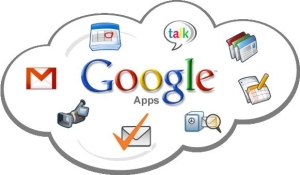Category: 3.2 Diffusion of Innovations
3.2.1 Identify strategies for the diffusion, adoption, and dissemination of innovations in learning communities.
3.2.2* Publicize the value of school library media programs within the school, community, and local school district.
Relative Advantage of Instructional Software
Math & Science Learning Activities
Good science methodology involves conducting tests and making observations. In the screencasts below I explore how simulations, virtual manipulative, and a virtual world can be used as learning activities.
Virtual World–Second Life
I’ve long been interested in virtual worlds, who wouldn’t want to explore without paying for gas, hotels, flights, etc., so I took this opportunity to spend a little more time getting my feet wet in Second Life. I was impressed with resources and activities found on Genome Island; I found scavenger hunts, interactive experiments like the mixallamas gene game, links to outside resources, and really cool virtual simulations like the 3D cell.
I found Second Life exciting and genuinely had the sense of being an explorer, however I did spend as much time experimenting with my avatar’s moves as I did exploring. Second Life seems like a neat tool for a teacher who is experienced with the Second Life landscape. Click on the photos to come on a tour with my avatar or click here.
Interactive Science Simulations
National Library of Virtual Manipulative
The National Library of Virtual Manipulative (NLVM) contains around 100 virtual manipulative that address concepts in numbers & operations, algebra, geometry, measurement, and data & probability. These manipulative virtually mimic many classroom manipulative like geoblocks, cuisnes rods, beakers, and rules. A teacher/parent section describes how each tool supports national math standards. These tools can be used to practice concepts, explore prior learned with new variables. I recommend that students use of these tools are guided by critical thinking questions.
The NLVM states, “Learning and understanding mathematics, at every level, requires student engagement. Mathematics is not, as has been said, a spectator sport. Too much of current instruction fails to actively involve students. One way to address the problem is through the use of manipulatives, physical objects that help students visualize relationships and applications.”
Click the photo above to take a quick virtual tour, or click here.
Hello from the EdTech Department
 Hello from your new instructional technology coach. I’m looking forward to working with the teachers of Chatham County. As I see it, my responsibility is to collaborate with you to plan, locate resources, and meet professional and student learning goals. My favorite technology tools make teaching more organized, engaging, and enjoyable. To kick things off this year, I’ve prepared a couple of activities for us to get to know each other and explore some of the resources you may want to include in your teaching.
Hello from your new instructional technology coach. I’m looking forward to working with the teachers of Chatham County. As I see it, my responsibility is to collaborate with you to plan, locate resources, and meet professional and student learning goals. My favorite technology tools make teaching more organized, engaging, and enjoyable. To kick things off this year, I’ve prepared a couple of activities for us to get to know each other and explore some of the resources you may want to include in your teaching.
 Sometimes the best way to learn how to help people just comes down to asking them. So to get an idea of what we can do to help you best, please take the Technology Use Survey. This survey was created using Google Docs (soon to be Google Drive), a powerful free tool that can change the way you run your classroom. These tools can allow students access their documents on any computer, collaborate, schedule events, create presentations and more. If you’re not familiar with Google docs, let us know in the survey.
Sometimes the best way to learn how to help people just comes down to asking them. So to get an idea of what we can do to help you best, please take the Technology Use Survey. This survey was created using Google Docs (soon to be Google Drive), a powerful free tool that can change the way you run your classroom. These tools can allow students access their documents on any computer, collaborate, schedule events, create presentations and more. If you’re not familiar with Google docs, let us know in the survey.
 If you’re not familiar with Pinterest, today is your day. Pinterest is a digital bulletin board where people collect and share ideas from hair styles to history. To get familiar with Pinterest, explore the resources I’ve gathered for you. Once you see how Pinterest can be used, you’ll create an account and start your own board. To wrap up, share the link to your board in the comment section and let me know what you thought of this first adventure together.
If you’re not familiar with Pinterest, today is your day. Pinterest is a digital bulletin board where people collect and share ideas from hair styles to history. To get familiar with Pinterest, explore the resources I’ve gathered for you. Once you see how Pinterest can be used, you’ll create an account and start your own board. To wrap up, share the link to your board in the comment section and let me know what you thought of this first adventure together.
If you would like a more in-depth preview on how to use Pinterest, check out this video.
To-Do List
- Get to know me on my Nice to Meet You! board.
- Scan the article “37 Ways Teachers Should Use Pinterest.”
- Create a Pinterest account.
- Read Erin Paynter’s blog Pinterest In Education and choose three boards to follow from her recommendations.
- Create your own board to help you in the classroom.
- Copy the link to your board and paste it in the comment section here.



